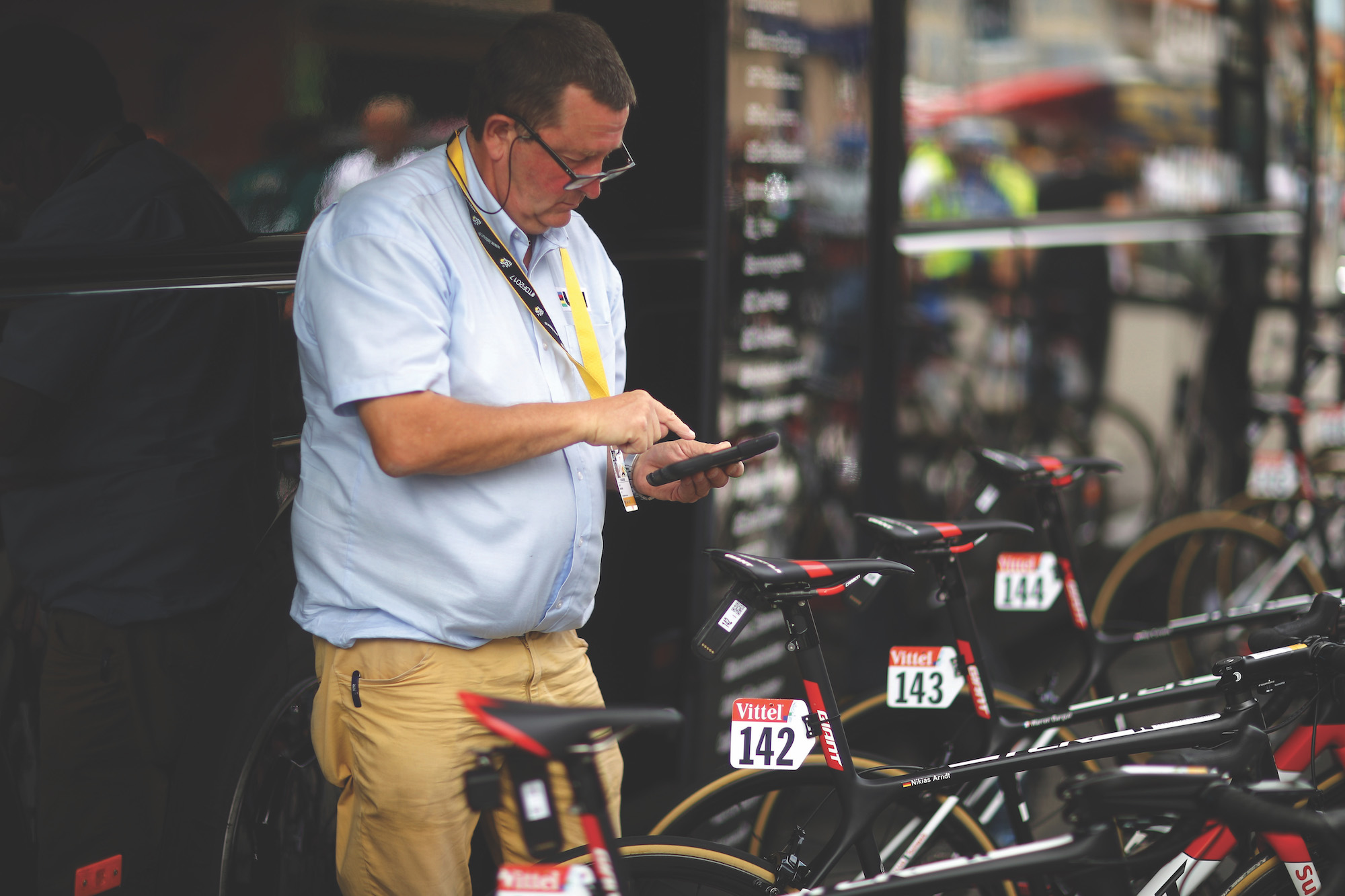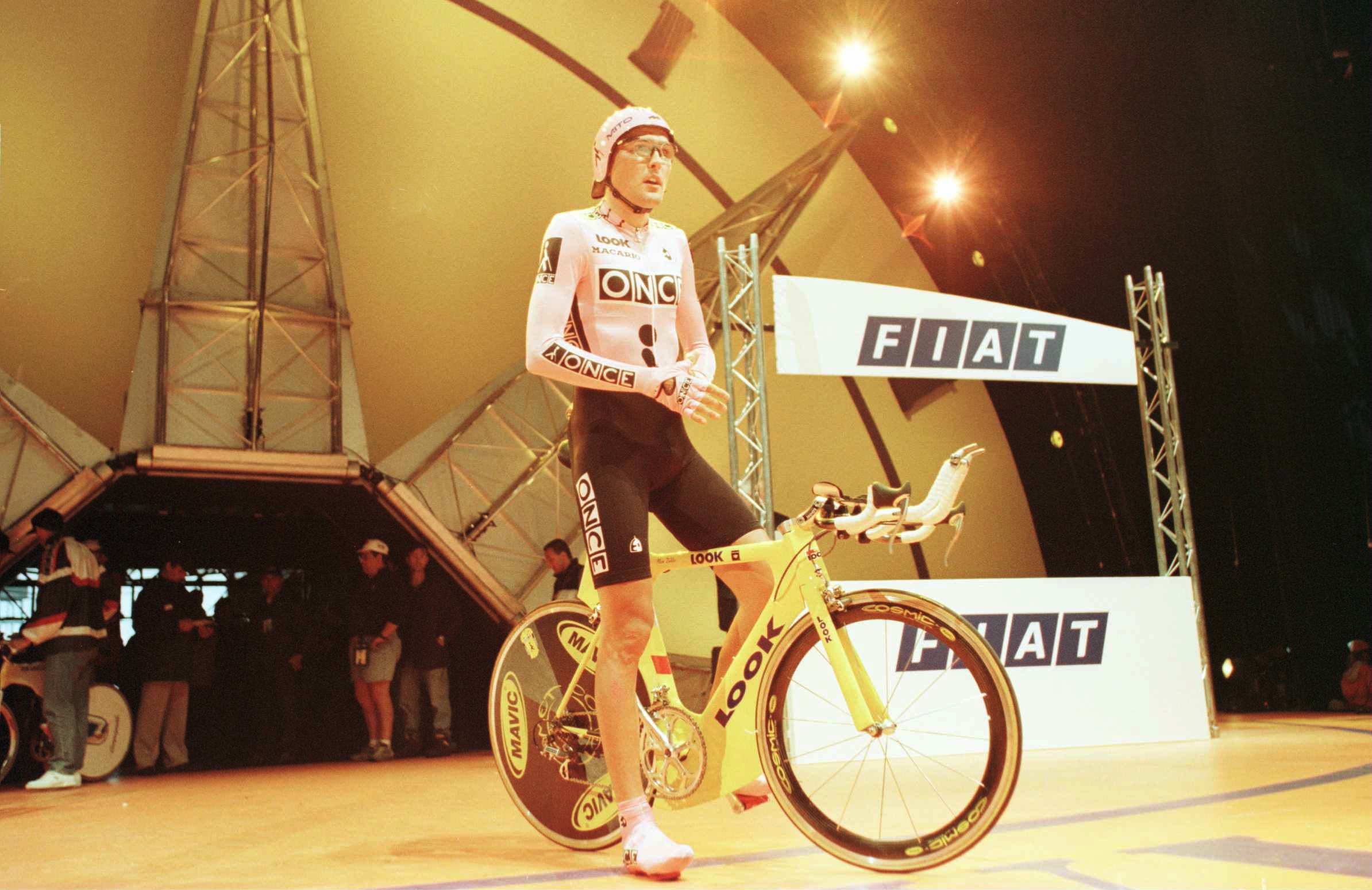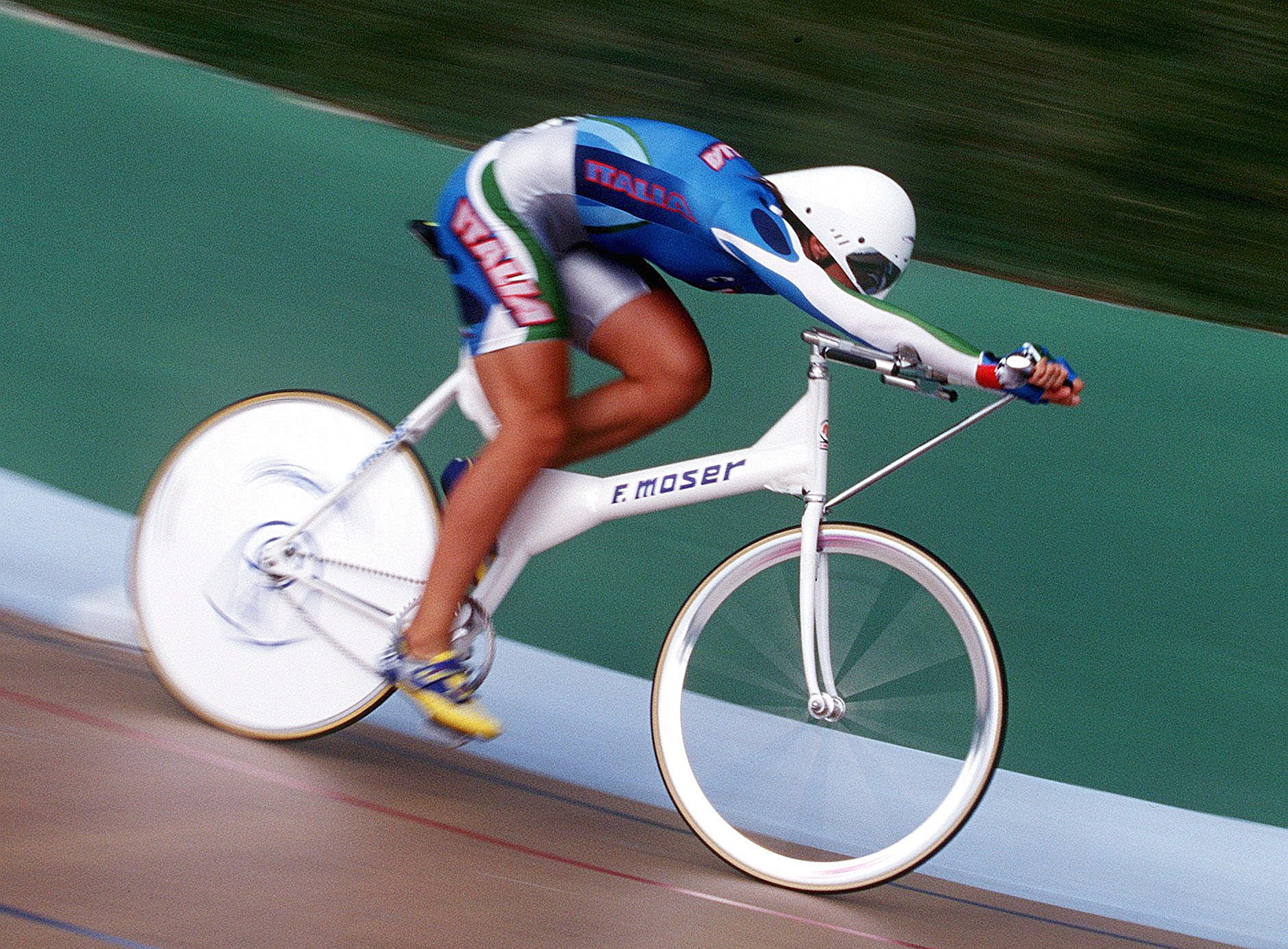The balance between clarity and ambiguity: How cycling bends the rules of innovation
The UCI's technical rules and regulations have made innovation tougher than ever, but Hannah Bussey discovers there are still some finding ways to push the limits


UCI staff checking bikes at the 2017 Tour de France (Photo by Chris Graythen/Getty Images)
Ambiguous rules can go one of two ways: they can create a strict regime or allow a liberal degree of freedom; and things don’t get much more ambiguous than guidelines defined by 'spirit'.
"Bicycles shall comply with the spirit and principle of cycling as a sport," says the UCI’s Principle 1.3. "The spirit presupposes that cyclists will compete in competitions on an equal footing. The principle asserts the primacy of man over machine."
Over the years, the ‘spirit claxon’ has sounded on multiple occasions, creating a history book of outlawed bicycles and endless clarifications to the guidelines within the UCI Technical Regulation.
The evergrowing Clarification Guide of the UCI Technical Regulation is now so expansive that much of the vagueness has been hoovered away, and we’re left with an illustrative guide on geometry explaining in exacting detail what a bike should look like, how much it should weigh (no less than 6.9kg) and more, including the height of its rider’s socks.
The UCI and its rulebook are repeatedly blamed for a lack of technological progression in cycling, but not everyone is so critical.
"It’s very difficult to regulate any sport and I think they actually do quite a good job of restricting technology, so we don’t end up with human torpedoes, but allowing for freshness," says Tony Purnell, head of technology at British Cycling.

"They’re not perfect, but, if you look at the regulations, really look, you’ll see there is a lot of scope within the restrictions."
The latest race content, interviews, features, reviews and expert buying guides, direct to your inbox!
Indeed, a simple glance and following Principle 1.3 verbatim would end up with bikes being punched out of symmetrical moulds. But there’s room for creativity for the brave.
"I feel the current rules strike the balance between clarity and enough ambiguity to keep things flexible. One of their main jobs is to prevent bikes becoming inherently expensive to reproduce, and things like the original Lotus bike would have been astronomical back then," Purnell says.
The Lugano charter
The Lotus that Purnell refers to is, of course, the one Chris Boardman rode to victory at the 1992 Barcelona Olympics. Four years later, Italian Antonella Bellutti rode to gold in the Obree Superman position on the Moser Wind bike, while team USA rode the GT Superbike, albeit to considerably less success.
The shift in technology acted as a red flag to the UCI, and, that very year, it drew up the Lugano charter, which focused on limiting technology to create equal athletic footing and set the wheels in motion for the technical regulations we have today.
So, are the innovative days of 1996 long gone?
"It’s about finding cracks and really thinking about the problem," says Purnell, who oversaw technological innovation through the Rio Olympics cycle and headed up the design and development of the Hope/Lotus bike that is the latest to push the UCI regulations right up to their boundaries.
While most of us stood with bated breath at the bike’s maiden voyage at the first round of the 2019/2020 Track World Cup in Minsk, Belarus, waiting for an officious-looking UCI representative to wade over, clipboard and tape measure in hand, ready to sentence the radical-looking machine, Purnell wasn’t quite so worried.
"It’s not quite as Hollywood as that," he laughs. "At first, we did go to them with a rather outlandish design, and they did sort of slap our wrists, saying 'it wasn’t how they would interpret the rules', but they did give us lots of 'because', which made sense. So we went back and forth a couple of times before
we presented a final bike that they felt was within the ‘spirit’ of cycling."
Saddle tilt
Recently, the UCI has relaxed rules as well as introduced them. In 2016, it altered its requirement for a saddle to be tilted 'less than 2.5 degrees' to 'up to nine degrees with a one degree margin of error'.
The man powering that change was head of physiotherapy at British Cycling, as well as consultant physiotherapist at Team Sky, Phil Burt.
"I was asked to look at the issue of women’s saddle injuries, and, knowing that increased saddle tilt would bring significant benefits to women, found there wasn’t any supporting evidence behind the original 2.5 degree maximum tilt rule. The main thing the UCI wanted to ensure was that the saddle didn’t artificially promote a specific position. So I simply proposed amending it to the biggest degree of tilt that a rider would benefit from, based on bike fit and physio data, then added a bit extra just to make sure, and it was agreed. As simple as that.
"The UCI aren’t some huge, draconian organisation," Burt says. "They are actually really open to challenge, but they don’t have the person-power to sift through every regulation in light of every new bit of research and development in order to change it. They work a lot with external organisations and people like myself when issues arise that need to be looked at."

It sounds all rather reasonable, but does finding gaps in regulations and adjustments to saddles count
as innovation?
"Ninety per cent of engineering is about making tweaks," says Purnell, "there isn’t this 'Eureka in the bath' moment about the design of bikes, it’s more of a constant fine-tuning."
This is a statement backed by Burt. "Sports that have significantly less restrictions still don’t move away from the core principles of a bike. Look at triathlon, it’s an incredibly wealthy sport, with very wealthy participants, so anything that had the edge could be made and sold for a healthy profit, but the bikes still fundamentally look like bikes."
And, while there are the odd few triathlon bikes that look slightly more radical, having done away with the seat tubes, even Cervelo admit that getting rid of the seat tube and stays on its PX5 is more around adding an extra bottle on board than aerodynamics.
"With bike design, it’s about looking at a whole system, which includes the rider," says Purnell. "There probably are bikes that best suit taller, leaner riders, and ones that are more suited to shorter, stout ones, but, in terms of overall design, there are minimal differences that can be made to give every rider significant gains."
Athlete vs innovation
It’s an argument that opens up a bigger can of worms over athlete v innovation: did the pre-Lugano charter bikes actually give riders unfair advantages, or were the riders actually phenomenal athletes, who would still have been the world’s best?
It’s a question Endura probed by recreating the banned bike ridden by maverick Graham Obree – and wind tunnel testing him on it, comparing the results to modern-day standards.
The outcome interestingly put him in the category of both engineering genius, with his ‘crouch’ position, which more or less did away with the handlebars altogether, and phenomenal athlete.

The 'crouch' significantly reduced the wattage required for speed, but the superman position, later adopted by Boardman et al, proved to have little benefit over UCI-regulated bikes, arguing that all riders who used it didn’t actually gain an unfair advantage.
Does this demonstrate they were the world’s best athletes anyway, and, assuming we all accept that
riding a bike with your chest, à la ‘crouch’ position, is never a good thing for safety, that the UCI regulations haven’t actually stalled innovation, but simply the aesthetics of cycling?
Purnell has the last word – of course, he believes the Hope bike will be fast, but there’s more to the equation: "At BC [British Cycling], there’s a lot of research that evidences the psychological benefits from something new. The power of the mind will have the biggest advantage on performance, far more than any marginal gains to be had by engineering tweaking.”"
Spirit, it seems, really is in the mind of the believer.
Pre-Lugano charter
In the 80s and 90s, bike designers went all-in in their quest for more speed. Here are just a few of the
bikes that raised eyebrows when they were unveiled.
- First bike to be banned – by the UCI was Francis Faure’s (designed by Charles Mochet) 1934 recumbent.
- Battaglin Piranha – this was meant for Roberto Visentini to race on in the prologue of the 1985 Giro d’Italia, but the UCI took one look at the front wheel and said ‘no way’, stating an unfair advantage, meaning it was never raced.
- Moser’s 1988 hour record bike – with a rear wheel over one metre in diameter acting as a huge flywheel, Francesco Moser failed to beat his outright record by 500m (it beat the indoor record) and killed the design off there and then.
- Pinarello Espada – Miguel Indurain flew round the stage eight TT at the 1995 Tour de France. Indurain won the stage and took the yellow jersey. He later tackled the hour record on the bike.
- Look THT – the grotesquely over-engineered bike ridden by the Spanish ONCE team in 1996 was thankfully pared right down. Alex Zülle and Laurent Jalabert had the ignominy of riding it first.
Hannah is Cycling Weekly’s longest-serving tech writer, having started with the magazine back in 2011. She has covered all things technical for both print and digital over multiple seasons representing CW at spring Classics, and Grand Tours and all races in between.
Hannah was a successful road and track racer herself, competing in UCI races all over Europe as well as in China, Pakistan and New Zealand.
For fun, she's ridden LEJOG unaided, a lap of Majorca in a day, won a 24-hour mountain bike race and tackled famous mountain passes in the French Alps, Pyrenees, Dolomites and Himalayas.
She lives just outside the Peak District National Park near Manchester UK with her partner, daughter and a small but beautifully formed bike collection.
